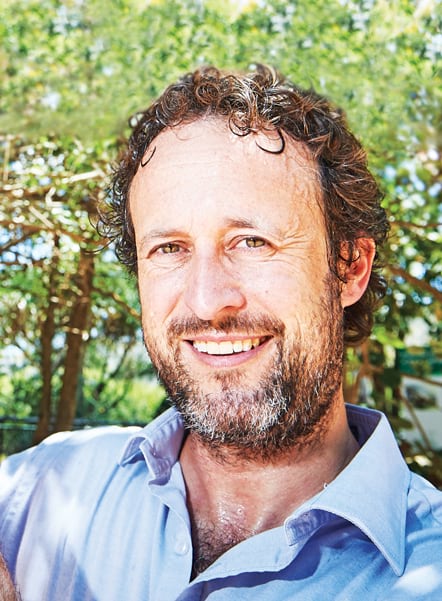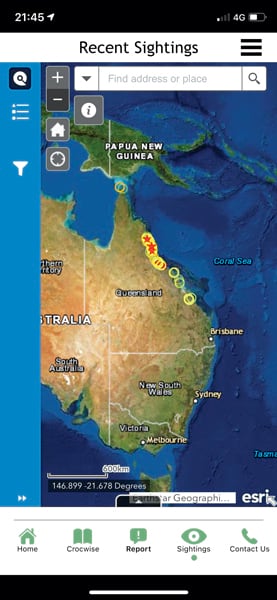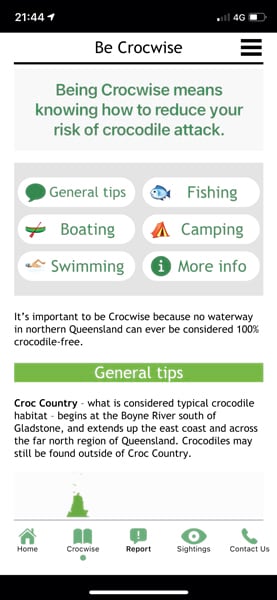From sparkling blue oceans to scenic islands and rain forests, the northern Australian state of Queensland has an array of natural habitats that are home to plants, mammals, and reptiles that are found nowhere else in the world.
One animal native to this region is the saltwater crocodile, the largest crocodile species in the world. Also known as estuarine crocodiles, or “salties,” these deadly predators may cause serious and even fatal injuries.
The government in Queensland needed to find a new way to help keep its residents safe. The Queensland Government Department of Environment and Science is responsible for national park management and wildlife conservation. Its personnel handle overall crocodile management and educate the public on how to remain safe around crocodiles. These responsibilities can include deciding whether to leave a crocodile where it was sighted or remove it from the area.
Initially, the department set up a toll-free number for people to report crocodile sightings. This telephone system is part of the QWildlife platform, a series of solutions for wildlife management. However, the telephone system had some shortcomings. According to Lindsay Delzoppo, director of northern wildlife operations in the Queensland Government Department of Environment and Science, “We just found that the ‘phone us and press a button’ system didn’t cut it in today’s market. Younger people wouldn’t use it because it’s just too old-fashioned and frustrating to use.”
In addition, the system generated a series of emails routing reports to decision-making personnel and the field staff managing sightings. Each part of the workflow could potentially be managed by a different person. This caused delays and provided no feedback to people who reported crocodile sightings.
A New Solution
The Queensland government approached GP One Consulting, following its successful bid to develop a new solution for reporting crocodile sightings, improving the safety of tourists and residents, and streamlining decision-making related to those reports. Queensland’s Deputy Premier Steven Miles, former Queensland environment minister, specifically requested that GP One Consulting create an app that would work on smartphones and tablets.

Located in Townsville, Queensland, in the heart of “croc country,” GP One Consulting is a software development services business that focuses on delivering targeted spatial web and native mobile applications. Gareck Packer, director and solutions manager at GP One Consulting, and his team began searching for the best software for developing this app. Packer and his team opted for ArcGIS AppStudio, an Esri solution they have been using for several years. Packer has been a personal champion of AppStudio ever since he developed an app for an Esri challenge in 2015, which he subsequently won.
With ArcGIS AppStudio, users can build geoenabled cross-platform native apps from a single code base. The team chose this low-code platform because it offers significant benefits both in production and in making apps easily available on multiple platforms. In tandem with AppStudio, the team also managed content using ArcGIS Survey123, a formcentric solution to create and distribute surveys and forms.
“As a business, we’ve been using AppStudio for quite some time, and we chose it because we could get something out very quickly. The app also leverages Survey123 so it fit in terms of a best practice, cross-platform solution,” said Packer. “The Survey123 template that was provided by Esri allowed us to put a lot out without us doing too much initial development or too much customization. Esri provided the templates for us to hit the ground running.”
As customizations of the original template were minimal, app development was rapid. Educational content was included, and the user interface changed to reduce the number of clicks and improve the overall user experience.
The GP One Consulting team involved rangers in the app’s development. “The rangers drove the design process, and they got to see exactly what was happening during the development process,” said Packer. “It’s been a massive success because the guys on the ground that will be using the system were taken on the full journey. The approach worked extremely well.”
The app, available on iOS and Android, is linked to ArcGIS Enterprise. When the public logs a crocodile sighting using the app, built with AppStudio, the data is pushed to ArcGIS Enterprise, where park rangers can leverage a range of web-based toolsets to manage and monitor each sighting.
Using AppStudio let the GP One Consulting team deliver an efficient app quickly and easily make it available to the public. “We don’t have to have a different developer for different platforms. We can just do it once and distribute it to many platforms,” said Packer. “As a developer, we love it. I think all of us…just get it.”

Reporting, Educating, Managing
The QWildlife app lets the public input crocodile sightings and educates them on how to behave in crocodile-infested areas. The app gives details on reported crocodile sightings from the last 30 days through an embedded map. Users can see exactly where crocodiles have been reported and where there are problem crocodiles being targeted for removal.
When a sighting is submitted, on-duty rangers, or field operators, receive text messages and emails. These notifications prompt rangers to access the system, fill out what is required, and pass on the report so that the workflow moves from sighting to decision so preventative actions aren’t delayed.
Once a sighting has been passed on, that sighting will pop up on the map. Users can check the status of sightings they’ve submitted. They can also subscribe to notifications to be alerted when a crocodile is sighted in their area.
According to Packer, the app is not just about public safety. Conserving crocodiles and other wildlife is fundamental to the department’s mission. By informing people how to behave around wildlife, it is less likely that drastic action will be necessary to mediate interactions with wildlife.
Engaging the Public
After six months in use, both the public and the rangers were pleased with the QWildlife iOS and Android apps. Delzoppo said sightings are reported and received by rangers quickly with the new digital system. Through the app, users are informed on how the department is dealing with the animal. Delzoppo added, “People are very pleased that we recognized their sighting and are dealing with it.”
“We haven’t done the math yet, but I’m sure that the efficiency and the cost saving will be there in terms of us being able to deal with an increasing number of sighting reports more efficiently and effectively,” said Delzoppo.

Although the phone system can still be accessed, the new app makes reporting and other capabilities accessible to a much larger demographic.
The new QWildlife app is helping the Queensland government appeal to a younger generation of users and expand their reach, an unexpected but welcome result of using new technology. “We’re not just an old fuddy-duddy organization using 1980s technology. [The app helps us show] that we’re with the times,” Delzoppo said.
“The app is an engagement piece for those people that are proactively being part of that reporting,” said Packer. “Users can get something back in return. And they feel good about themselves and may be more willing to engage later.”
Expanding App Uses
While users are pleased with the app, the feedback from partner organizations of the department has been equally positive. Delzoppo explained that 40 local governments in Queensland can directly benefit from this solution. His team can let the counselors in each local government know what’s happening in their parks and keep their constituents better informed.
Surf Life Saving Queensland is another partner organization and a key client of the department. Surf Life Saving manages swimming on Australian beaches. The fast reporting with the app has allowed the department to alert Surf Life Saving in advance if there has been a crocodile sighting in the area to help keep swimmers safe in the water.
Delzoppo said the department has big plans for the QWildlife app and will use it to manage sightings of other interesting wildlife—such as koalas and cassowaries, a native exotic bird—to help conserve them. “We’re starting with crocodiles, but we’ll be dealing with a whole range of different wildlife in Queensland,” he said.

